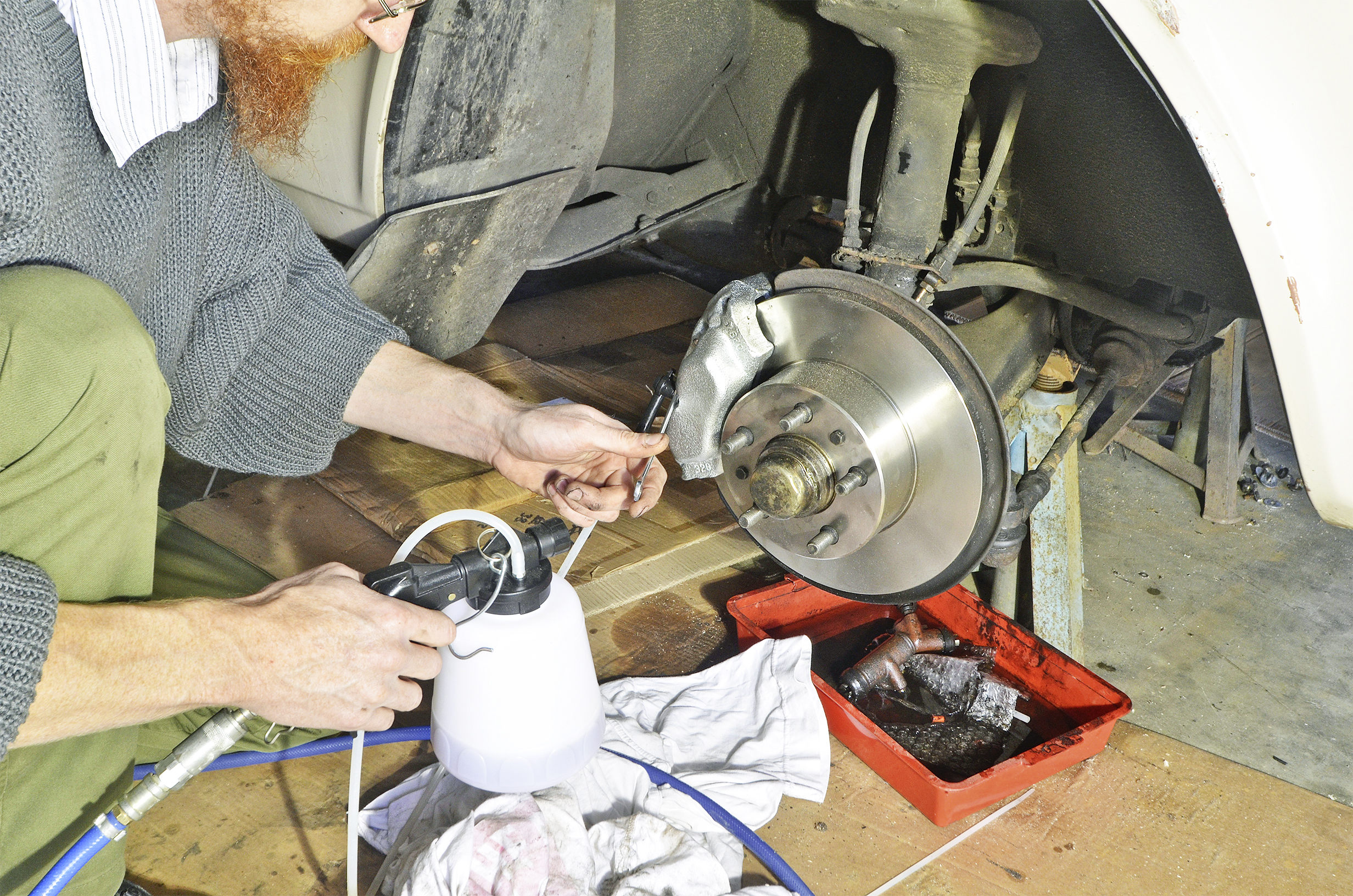 If you’re having trouble bleeding your classic car brakes, there’s a possibility that the nipples are open too far. A quarter-turn should be more than enough. If it’s still drawing air through the threads in preference to drawing fluid out of the system, then the fluid isn’t able to flow freely from the reservoir. If you open each of the bleed nipples with nothing connected to them, you should get a free flow of fluid pushed by gravity alone. If the fluid makes no effort to escape, then the system is constricted in some way. The most common brake bleeding problem is that the piston of the master cylinder doesn’t fully return when the brake is off. This can be caused by a lack of free-play between the pedal pushrod and the cylinder (allow about 1mm) or by rust or debris building up at the open end of the cylinder. Only when the piston is fully ‘home’ is there direct communication between the reservoir and the master cylinder. The other constriction commonly found is in old flexi-hoses that have closed up inside. Inspect them closely and replace as a matter of course if they’re long in the tooth.
If you’re having trouble bleeding your classic car brakes, there’s a possibility that the nipples are open too far. A quarter-turn should be more than enough. If it’s still drawing air through the threads in preference to drawing fluid out of the system, then the fluid isn’t able to flow freely from the reservoir. If you open each of the bleed nipples with nothing connected to them, you should get a free flow of fluid pushed by gravity alone. If the fluid makes no effort to escape, then the system is constricted in some way. The most common brake bleeding problem is that the piston of the master cylinder doesn’t fully return when the brake is off. This can be caused by a lack of free-play between the pedal pushrod and the cylinder (allow about 1mm) or by rust or debris building up at the open end of the cylinder. Only when the piston is fully ‘home’ is there direct communication between the reservoir and the master cylinder. The other constriction commonly found is in old flexi-hoses that have closed up inside. Inspect them closely and replace as a matter of course if they’re long in the tooth.

DOSE IT MAKE A DIFFERENCE TO FREE FLOW IF A SERVO IS ON THE SYSTEM
This is really handy advice. I have had a lot of difficulty bleeding the rear brakes of my xj6 series 1 due to the location of the nipples so will be very careful how far I open them.
Yes i agree sometimes with a vacuum bleeder pushing the pedal will get the fluid flowing so a combination of pedal and vacuum can do the job also letting the pedal back up slowly while bleeding helps cheers Steve
Sam - do you favour a pressure bleeder (eg Easybleed or similar) or a system that 'pulls fluid through ' from the bleed screw???